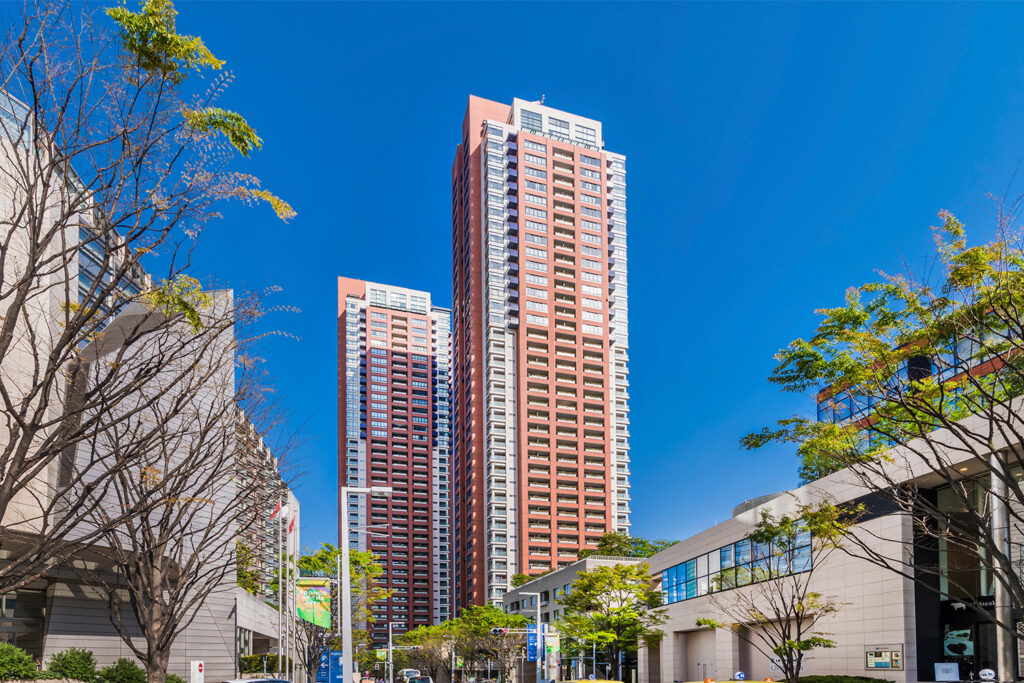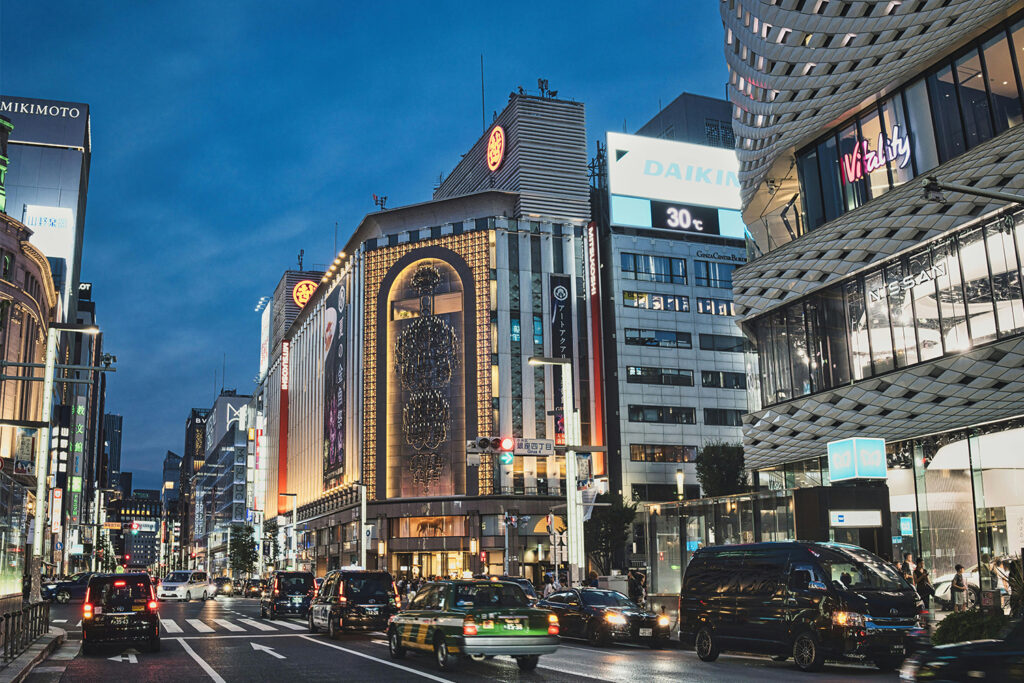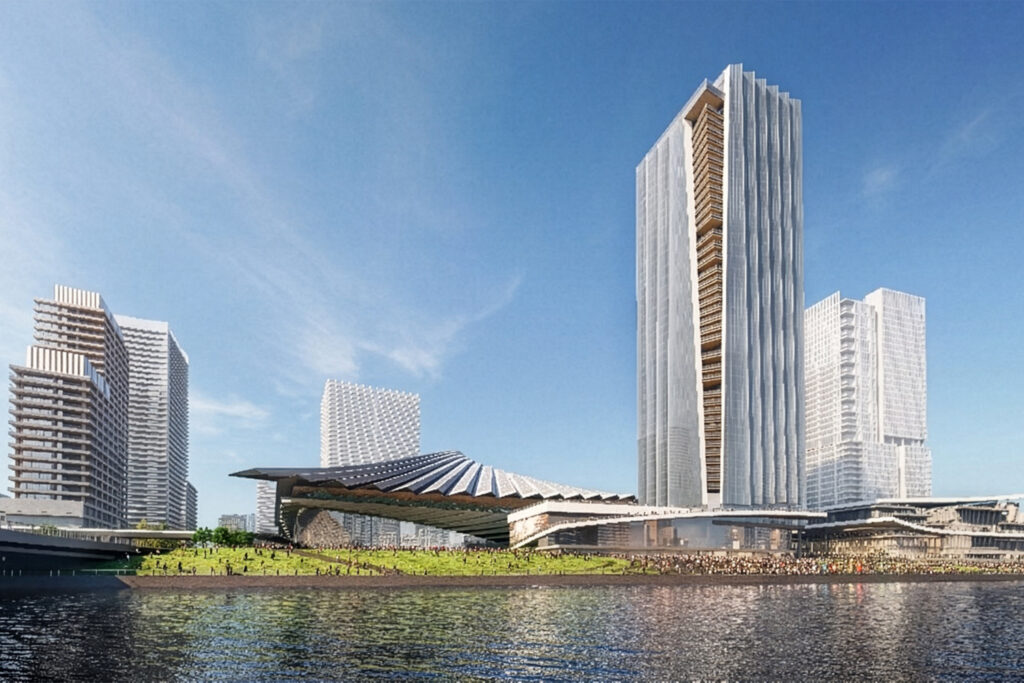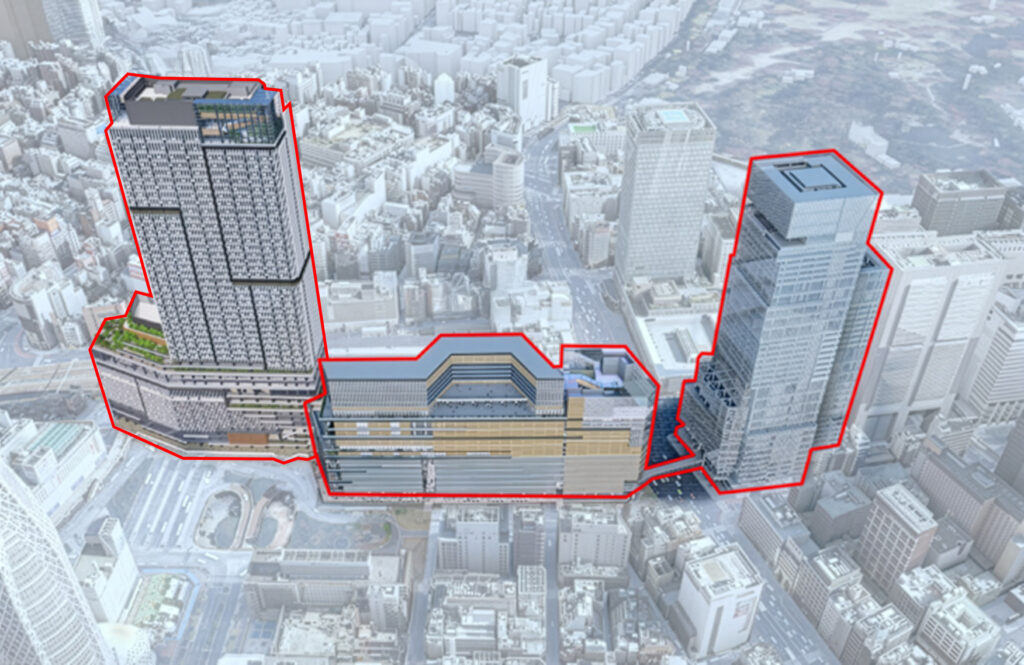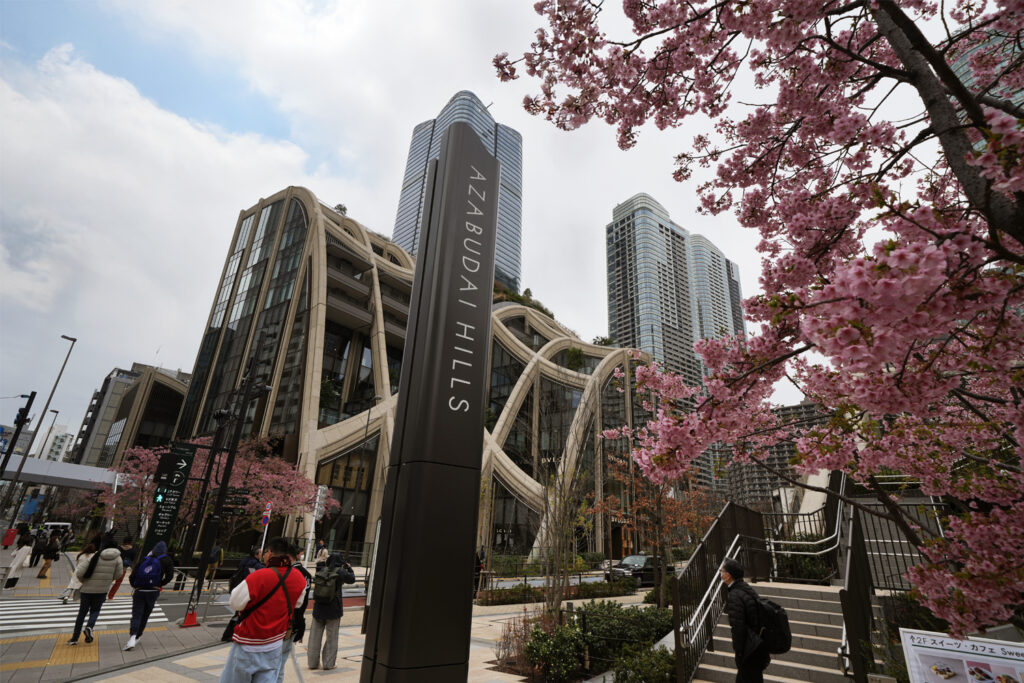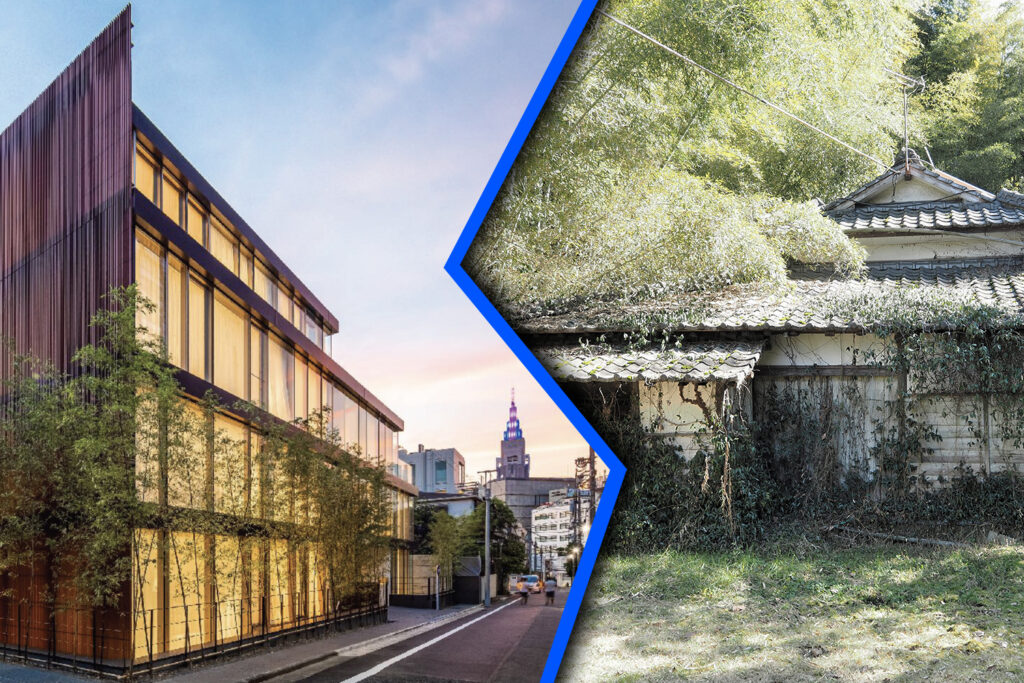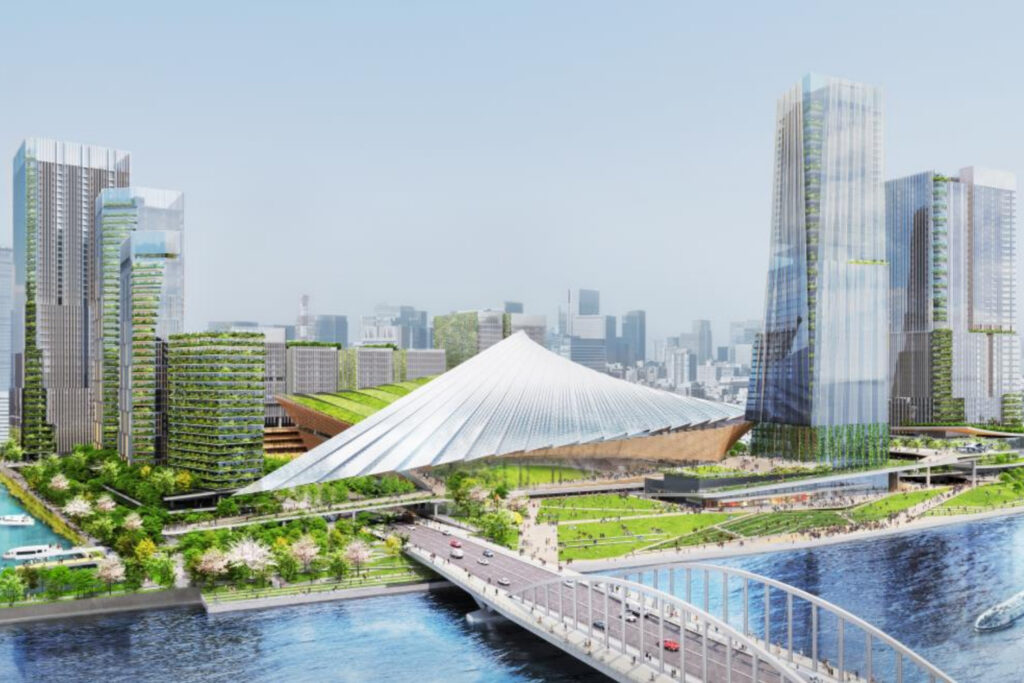
Tokyo’s former Tsukiji fish market site sits empty no longer. After the market relocated to Toyosu in 2018, the Tokyo Metropolitan Government moved forward with plans to transform this 19-hectare waterfront location in Chuo Ward into something new. In April 2024, the government selected Mitsui Fudosan and a consortium of major companies to develop what officials call “a hub with abundant water and greenery for creating and promoting new culture through diverse exchanges with people from around the world.” The Tsukiji Redevelopment is geared for the future with large green livable spaces, modern multiuse stadium even an area dedicated to flying cars.
From Market to Metropolis
The Tsukiji area carries deep historical roots. During the Edo period, samurai residences lined these streets. Later, in the Meiji era starting in 1868, the district became home to a foreign settlement that housed Japan’s first women’s higher education institution, an early full-service hotel, and medical facilities. The Tsukiji fish market opened in 1935 and operated until 2018, when it moved to make way for this redevelopment.
The project aims to turn the site into more than just another business district. Plans include a 50,000-seat stadium that can change its layout for different events like rugby, baseball, soccer, basketball, and concerts. A life science and commercial building will house laboratories, offices, and stores. Hotels, MICE facilities (venues and services designed to host Meetings, Incentives, Conferences, and Exhibitions) for conferences and exhibitions, residential buildings, and office towers round out the development.
What the Plans Include
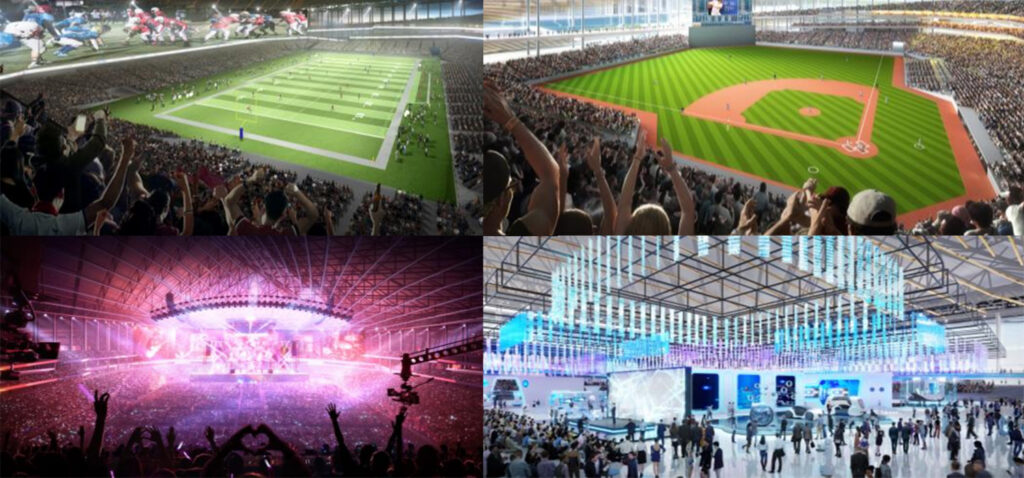
The selected operator group, led by Mitsui Fudosan and including Toyota Fudosan, Yomiuri Shimbun Holdings, and major construction firms Kajima, Shimizu, Taisei, and Takenaka, proposed a total floor area of about 1.17 million square meters across nine buildings. The development calls for around 40% green coverage, with parks and open spaces along the Sumida River waterfront.
Transport connections matter for a project this size. Plans call for a new subway station on the proposed Central Tokyo and Waterfront Area Subway Line, plus access to the Urban Expressway Route 10 Harumi Line. A disaster prevention pier will support water transport, with boat services connecting to other parts of Tokyo. The design even includes a port for flying cars, looking toward future mobility options. The project aims for carbon neutrality through solar power generation, hydrogen power stations, biogas generation, and other environmental measures. Buildings will use domestically sourced timber where possible.
Timeline and Costs of The Tsukiji Redevelopment
The Tokyo Metropolitan Government will lease the land to the operators under a 70-year fixed-term agreement, plus construction time. The total project cost is estimated at around 900 billion yen (approximately $6 billion USD at current exchange rates).
Before construction can begin, archaeological surveys must finish examining buried cultural properties from the Edo period. Workers have already found stone walls from the Sumida River and pond structures, plus wooden water pipes. Soil contamination treatment is also underway, though officials say contamination levels pose no health risks and no ingestion routes exist. Initial facilities could open as early as 2029, with the full district opening in the early 2030s. A theater and boat transport complex along the waterfront is planned as an early phase to create activity before the larger buildings finish.
Questions About the Approach
The scale raises practical concerns. A 50,000-seat indoor stadium in central Tokyo would be massive, significantly larger than existing venues like Tokyo Dome. Whether demand exists for another facility of this size in a city already well-served by event spaces remains to be seen.
The 70-year lease structure means the Tokyo Metropolitan Government won’t own the buildings but will collect rent while private operators control development and operations. This approach differs from more traditional public development or outright land sales. The government argues it maintains more influence this way while bringing in private expertise and funding.
Environmental targets like carbon neutrality sound ambitious. Achieving net-zero emissions for a development this large, with a stadium hosting frequent events, will require the planned renewable energy and efficiency measures to perform as expected. The 40% green space ratio helps, though much depends on how that percentage is calculated and what counts as green space.
The Wider Context
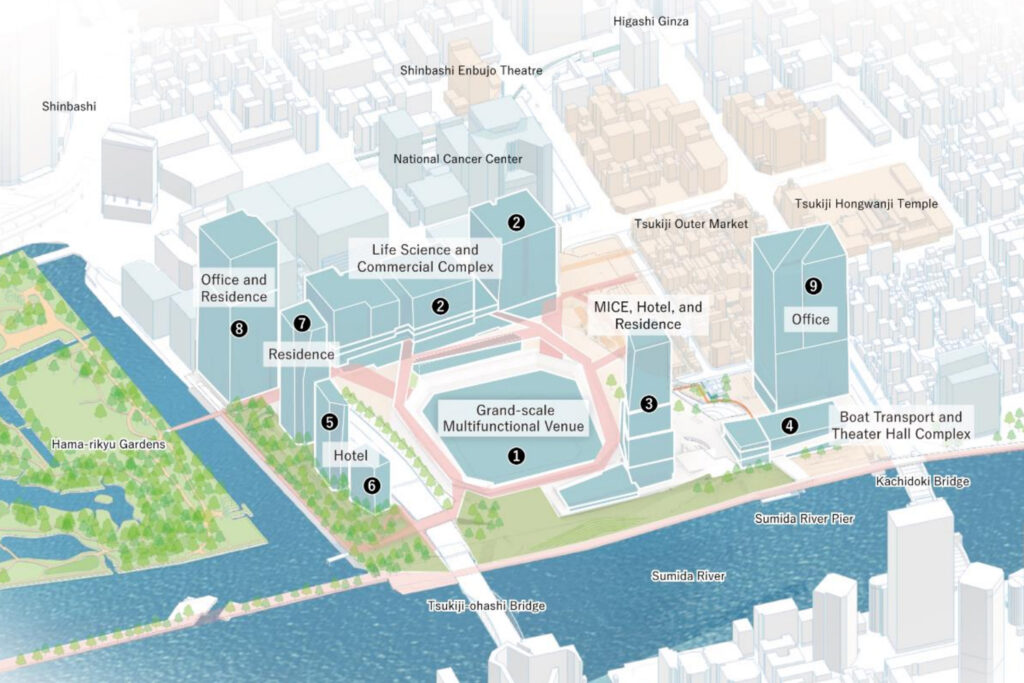
This project sits within Tokyo’s larger pattern of waterfront development. Similar transformations happened at Odaiba, Toyosu, and the broader Tokyo Bay area over recent decades. The Tsukiji site benefits from its central location near Ginza and its waterfront position, but it also faces competition from these other developed areas. The Tsukiji Outer Market, which stayed in place when the main market moved, will remain separate from this development. The outer market draws tourists for its food vendors and restaurants, and the new development plans call for creating connections with it rather than replacing it.
Potential Impact on Local Property Values
Major infrastructure projects often affect surrounding property values, and the Tsukiji redevelopment could follow this pattern. The new subway station and expressway access might make neighboring properties in Tsukiji, Ginza, Tsukishima, and parts of Minato Ward more accessible. In Tokyo, proximity to train stations typically correlates with property values, and areas within walking distance of new stations sometimes see increased interest from buyers.
The development’s mix of offices, hotels, and cultural facilities could draw more people to work and visit the area, potentially increasing demand for nearby residential properties. The planned green spaces and waterfront access might make adjacent neighborhoods more appealing to buyers looking for quality of life improvements. Projects of this scale can also shift how people view a neighborhood, attracting different buyer demographics than before.
Property value changes depend on many factors beyond the development itself, including Tokyo’s overall real estate market conditions, interest rates, population trends, and economic factors. The final tenant mix and how well the development actually attracts visitors and businesses will matter more than the plans themselves.
The development’s completion timeline stretching into the 2030s means any effects would likely emerge gradually rather than all at once. Early phases might generate initial changes, with further shifts as major components like the stadium and convention facilities open. Property investors and potential buyers in surrounding areas would need to consider both the opportunities and timing that come with such a large, long-term project nearby.
Source: Tsukiji District Development Project: Bureau of Urban Development Tokyo Metropolitan Government
Why Housing Japan?
With 25 years of expertise in Tokyo’s luxury real estate market, Housing Japan offers specialized knowledge in investment properties across central Tokyo. Our highly skilled multilingual team understands how major developments like Tsukiji affect surrounding property values and can guide buyers through opportunities in Ginza, Minato Ward, and waterfront areas. Whether you’re seeking a luxury residence or investment property, Housing Japan provides the local insight and international service that makes us Tokyo’s trusted choice for discerning buyers.
Contact Us
Housing Japan
7F BPR Place Kamiyacho, 1-11-9 Azabudai, Minato-ku, Tokyo, Japan 106-0041

